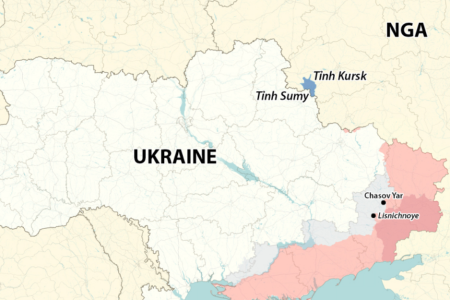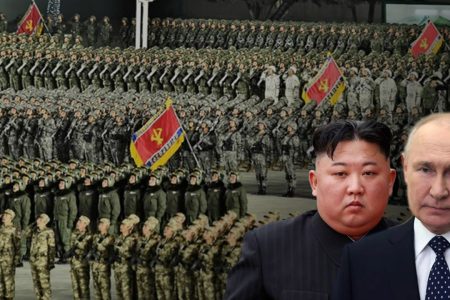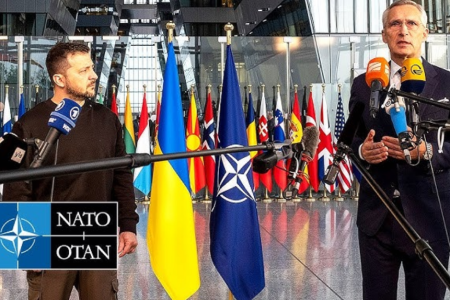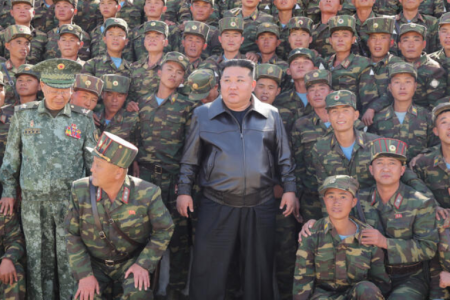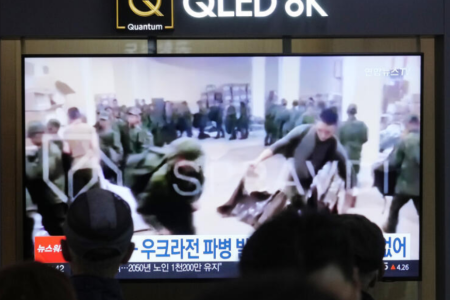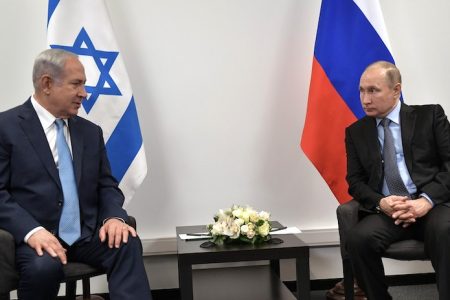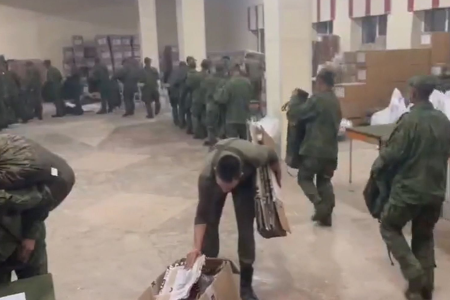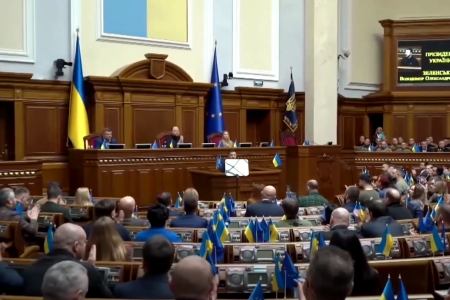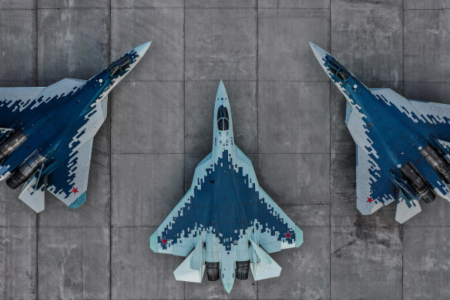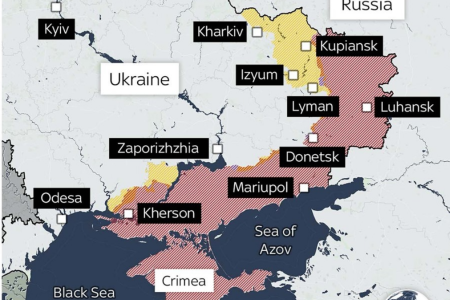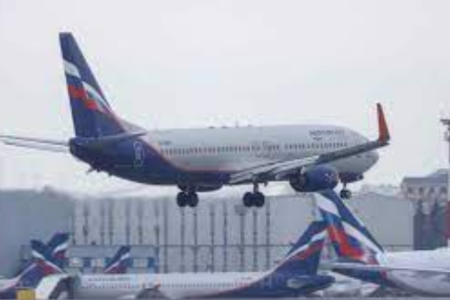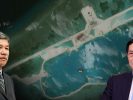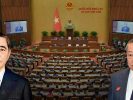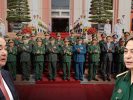US Secretary of State Mike Pompeo on April 23 told Southeast Asian partners that China is taking advantage of the world being busy with the Covid-19 pandemic to promote territorial ambitions in the East Sea (South China Sea).
Pompeo made the allegation in a video conference with the Foreign Ministers of the 10 member states of the Southeast Asia Association.

China’s territorial expansion claims in the South China Sea overlap with the demands of ASEAN member states such as Vietnam, Brunei, Malaysia, the Philippines and Indonesia and are opposed by Wasington. The US has a positive naval presence in the Pacific.
“Beijing has taken advantage of countries focusing on the pandemic to unilaterally announce the establishment of new districts in archipelagos and maritime areas, sinking a Vietnamese fishing boat earlier this month, and set up “research stations” on Cross reef and Subi reef,” Pompeo said.
He also accused China of sending warships to the area to threaten other claimant states in offshore oil and gas exploration.
Most of the participating ministers focused on the medical, economic and social issues caused by the Covid-19 pandemic, a viral illness.
“Foreign ministers exchanged views on the situation of the Covid-19 pandemic in their countries, as well as news and best ways to deal with a virus outbreak in the public health perspective,” Singapore said. “The Ministers noted the serious socio-economic impact of the Coronavirus and working together with the US on a forward-looking trend to address the economic recovery after the pandemic.”
Pompeo thanked Vietnam, Malaysia and Cambodia for material assistance in fighting the virus outbreak and noted the US financial support.
“So far, the United States has provided more than $35.3 million in emergency medical assistance to help ASEAN countries fight viruses, building over $ 3.5billion in public health aid to provide ASEAN countries in the last 20 years,” he said, and announced a new project to promote health security through research, public health and training.
Pompeo said the US was also concerned about a recent scientific report “showing that Beijing upstream dams have unilaterally altered the flow of the Mekong,” endangering the lives of tens of millions people downstream in Laos, Thailand, Cambodia and Vietnam.
The US Embassy in Vietnam on January 14 issued a statement expressing concern that China is changing the natural flow of the Mekong.
Specifically, the notice, based on research by Eyes on Earth, a water consulting and research firm, shows that China is rapidly changing the natural flow of water flowing into the lower Mekong basin, with the greatest flow restriction resulting from the construction and operation of large hydroelectric dams.
This research was conducted by Eyes on Earth Inc, funded by the US Department of State’s Lower Mekong Initiative.
According to the report, the ‘natural’ correlation of river water levels with rainfall and snow melting in the upper Mekong of China began to change in 2012, when Beijing began to build and operate hydroelectric dams. The most obvious difference was last year 2019.
China rejected the study because Yunnan province suffered severe drought last year and the water reserves at the dams dropped to historic lows. China said that it is absurd to explain that China built dams on the Lan Thuong River, Chinese name for the Mekong River, causing drought downstream.
The Mekong flows from China through Laos, Myanmar, Thailand, Cambodia and Vietnam. Drought last year, the water level in the lower Mekong basin to the lowest level in 50 years, causing heavy economic damage to people in the downstream.
As the flow from China to the downstream is reduced and there is very little rainfall across the lower Mekong, upstream countries have increased their use of water on the tributaries, even on Mekong mainstream.
As a result, flow to the Mekong Delta region of Vietnam is also declining. In addition, the tidal regime is unfavorable so coastal saline intrusion remains similar to the level of salt intrusion in January 2020.
The US warned of China’s bullying, sending two warships to the South China Sea

“We need to see clearly that the People’s Republic of China is” taking advantage of the time the world focuses on the Coronavirus crisis to continue provocative acts. The Communist Party of China is using military pressure and forcing its neighbors in the South China Sea, even sinking a Vietnamese fishing vessel. The US strongly opposes China’s bullying and we hope other countries will hold them accountable as well.”
The US Navy on April 21 confirmed the dispatch of two warships to the South China Sea, while Reuters sources said the ships operated near the area believed to be “confrontation” between China and Malaysia.
According to observers, this is considered a warning message sent to Beijing.
Nicole Schwegman, a spokesman for the U.S.-Pacific Command, said April 21 that the USS America amphibious assault ship and USS Bunker Hill guided missile cruiser were deployed in South China Sea.
“Through our continued presence in the South China Sea, we are working to … promote freedom of navigation, overflight, and international principles that underpin the security and prosperity of the Indian Ocean – Pacific.
The US supports the efforts of allies and partners in deciding their own economic interests,” Ms. Schwegman wrote in an emailed statement to Reuters.
Washing ton sincerely desires the legitimate and legitimate rights and interests of nations in compliance with the 1982 United Nations Convention on the Law of the Sea (UNCLOS); Stakeholders must be responsible for complying with international law, UNCLOS 1982, demonstrating their commitment to developing friendly relations between nations and peace, stability and cooperation in the South China Sea, the region and the world.
Meanwhile, Rear Adm. Fred Kacher, commander of the USS America expeditionary group, told Reuters his forces had contacted the Chinese navy in the South China Sea this week.
“All our interactions continue to be carried out safely and professionally with China,” said Kacher.
Mr. Kacher did not say exactly where the US ships are operating, but security sources believe that the US ship is near China’s HD8 ship and the Petronas West Capella, operated by Malaysia’s Petronas Gas and Oil Company.
Last week, the Chinese HD8 was discovered conducting a survey near the area of Petronas probes in operation. This is a survey similar to what China did in Vietnam’s waters, seriously violating Vietnam’s exclusive economic zone and continental shelf in 2019.
Although the parties so far have not confirmed the “confrontation” above, there have been reactions from the US. Before the statement confirming Nicole Schwegman’s two warships to the South China Sea, on April 18, the State Department issued a statement expressing concern about the information surrounding China’s “provocation” against offshore oil and gas activities of countries in the South China Sea.
“China should stop the bullying and avoid engaging in these kinds of provocative and destabilizing activities,” the US State Department wrote in an email responding to a Reuters question about the HD8 ship’s presence near the Malaysian drilling ship.
Talking to Tuoi Tre, Dr. Satoru Nagao, an expert at Hudson Research Institute (USA), said that so far China has restrained provocation at a low level in the region and then it was not enough threat level to lead to American intervention.
But Chinese vessels disrupting other countries’ oil and gas operations seem to touch the “red line” for US Indian-Pacific commitments.
Therefore, the information about the “confrontation” between China and Malaysia recently may be the starting point for the activities of the US Navy in the South China Sea.Covid-19 pandemic has hit hard … there is no better time for Beijing to fire the signal of disregarding the South China Sea decision of the arbitral tribunal and create an irreversible situation if they are not challenged.
Dr. Sascha-Dominik Dov Bachmann, a professor at Canberra Law School, University of Canberra (Australia), said to the newspaper.
As noted, so far neither China nor Malaysia have confirmed a “confrontation” in the area where the West Capella is drilling. In reply to Reuters, China’s Foreign Ministry wrote that the “so-called” confrontation “at sea you mentioned did not take place.”
The head of Malaysia’s maritime law enforcement Zubil Mat Som confirmed the presence of China’s HD8 ship, but told the Malay Harian Metro daily: “We don’t know what its purpose is, but for now it’s not taking any illegal action.”
According to Dr. Zachary Abuza, a professor at the US National War Academy, China has always been furious when Vietnam and Malaysia submitted a joint claim to the UN since 2009.
After that, Malaysia also quietly submitted another continental shelf claim last year.
“Malaysia will never provoke or openly publicize its position in front of China. Their actions are always to submit silent legal documents to challenge China’s excessive claims. HD8 can also go through claimed areas of Brunei, but China knows that both Brunei and Malaysia will not be open about it, “Dr. Abuza told Tuoi Tre.
Meanwhile, comment on China’s motive for a series of destabilizing actions in the South China Sea during the Covid-19 pandemic, Dr. Sascha said that Beijing is trying to test how Vietnam and ASEAN respond.
As a law expert and served in the military, Dr. Bachmann has studied China’s global leadership ambitions, including the “gray zone” and “legal war” tactics as a stepping stone, which what Beijing does in the South China Sea is proof.
Talking to Tuoi Tre on China’s motive for naming administrative administration “zones” in the Spratlys and Paracel Islands recently, Bachmann said: “After losing in the Philippines case, one of the key In addition to China’s attempts to turn artificial islands into islands, announcing the administration of the Spratlys and Paracels is a way for them to re-examine international law, national recognition and the determination of the neighboring countries in the South China Sea as well as international support for these neighbors.”
ASEAN needs to unanimously respond to China’s hegemonic ambition in the South China Sea.
In an article for the Center for Strategic and International Studies (CSIS), South China Sea expert Richard Heydarian once said that the current issue is not a lack of opposition, but a lack of coherent and co-ordination from ASEAN countries on Chinese intrigue. According to Mr. Heydarian, the fact that if all agree to protest, China still had to adjust.
He wrote: “History shows that Beijing reacts to pressure, back to a unanimous response of key neighbors and global powers. Recent examples include adjustments in the Belt and Road Initiative. between criticism of debt trap diplomacy, Beijing’s decision to waive veto power in the Asian Infrastructure Investment Bank (AIIB) … “.
And this time, taking advantage of countries including Vietnam, which are busy in deailing with Covid-19 pandemics, China has threatened and intimidated conspiracy land to monopolize the South China Sea.
The Communist Party in Hanoi, through this act, clearly saw the dark intentions of their comrades, and needed a more decisive attitude toward its northern neighbor.
Hoang Trung from Hanoi – Thoibao.de (Translated)



